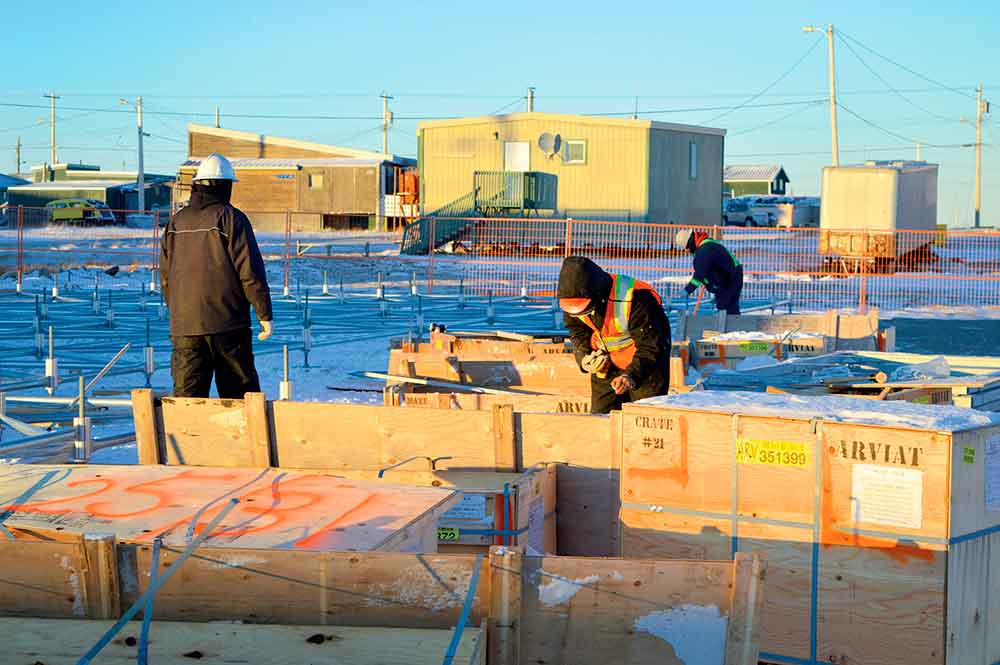
With a $55-million construction budget, the Nunavut Housing Corporation is planning to build 79 new residential units in communities outside Iqaluit in 2019-20.
That's down from 2018-19 when the housing corporation had $65.7 million earmarked for construction of 153 residential and staff units.
The communities that will see the most spending on the renovations of public housing units are Iqaluit ($790,000), Arviat ($691,000), Baker Lake ($627,000), Kugluktuk ($492,000) and Rankin Inlet ($482,000). The NHC budgets approximately $11 million per year for modernization and improvement of its housing stock.
Last year, the NHC spent $1.9 million among 10 private contractors in the Kivalliq, close to $1.6 million on Kitikmeot private contractors while $540,000 went to Qikiqtaaluk region contractors.
For Jonathan Poirier, general manager of Iqaluit-headquartered Sanaqatiit Construction Ltd., projects through the housing corporation account for 50 to 60 per cent of Sanaqatiit's annual revenue.
"So it is an important part of our program," said Poirier. But it's also riddled with uncertainty due to the competitive bidding process. We never know until the tenders close and we see the results. Some years we are successful and some years we are not," he said. "We are hoping that we can get our share of the work available."
On years when several contracts fall into place – like in 2018 when Sanaqatiit built units in Chesterfield Inlet, Cambridge Bay, Taloyoak and Gjoa Haven – Poirier said the company, which has been operating in Nunavut since 2010, has construction crews that it can call upon.
"They generally are ready to go," he said. "Some years you need to build up crews and have a few new workers."
The job isn't easy. Long, cold winters and blizzards create challenging work environments and there's no readily accessible lumber stores when supplies run short, Poirier noted. "Working in the Arctic is a real challenge but we enjoy working with the local workers, suppliers and trades; also developing relationships in the communities," he said. "We feel the relationships we build make us stronger."
BREAKER: Low-carbon efficiency program on the way
In the next few years, there will be a major initiative to upgrade insulation, weather stripping, vapour barriers, ventilation, windows and doors in public housing units through the federal government's Low Carbon Energy Fund. This will involve 500 NHC units.
In addition, 500 hot-water tanks are expected to be replaced along with 120 furnaces and boilers, some of which are up to 30 years old. More energy-efficient hot-water tanks and heating units will be installed. The objective is to lower greenhouse gas emissions.
"The Low Carbon Energy Funding Project is in the planning stages. The LCEF project is a multi-year initiative and will be rolling out in the coming years." stated Stephen Hooey, NHC's vice-president and chief operating officer.